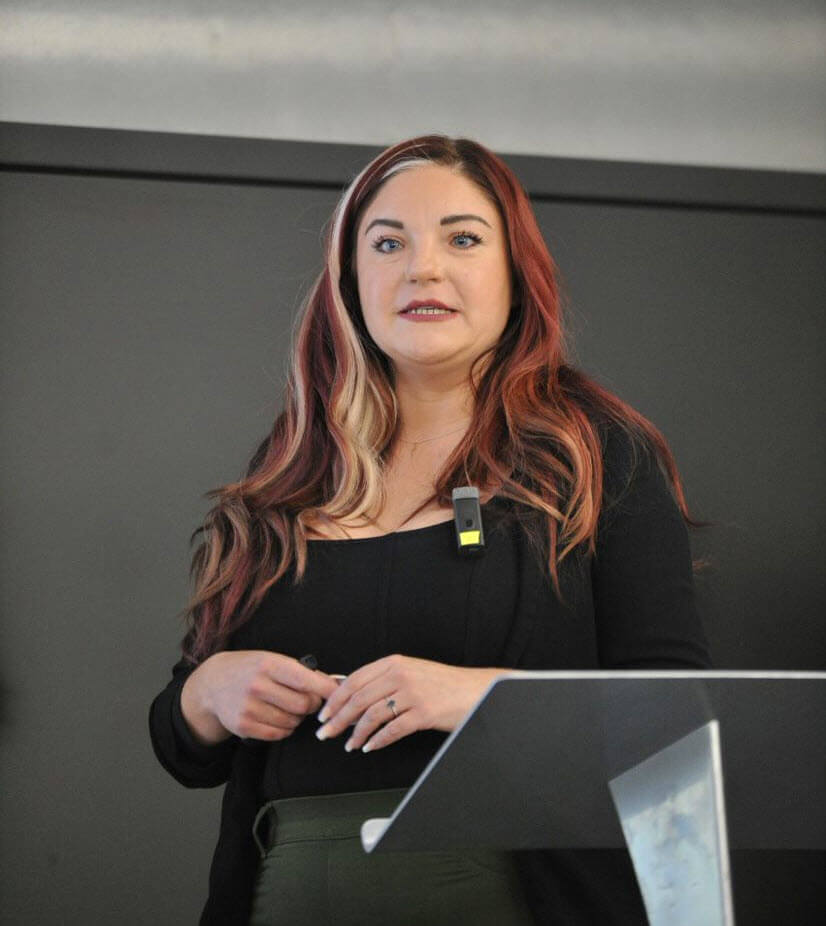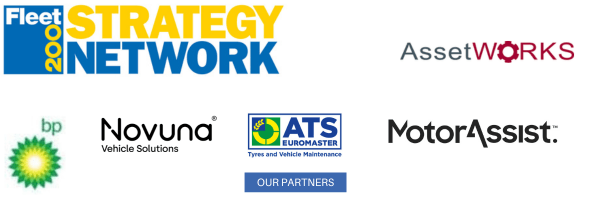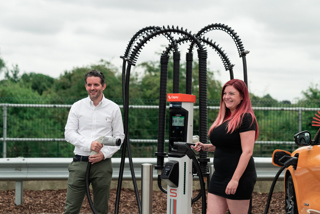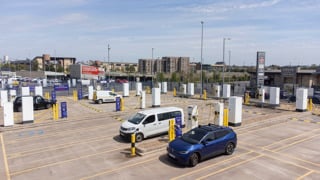ChargeSafe aims to help drive electric vehicle (EV) adoption and end the ‘charge point monopoly’ through providing a solution for EV drivers who find themselves needing to use public charging infrastructure.
The platform, that audits and inspects charge points, provides each charge point with a score from one to five considering: safety, functionality, environment, operations maintenance, and accessibility.
ChargeSafe inspectors carry out a 92-point check on each charge point, with the number of checks constantly evolving, according to founder, Kate Tyrrell (pictured).
The information following inspections will be available publicly, while charge point operators (CPOs) can subscribe to the service to receive reports about their own network.
Tyrrell said: “We want to encourage EV adoption by providing a platform which enables the collection, storage and distribution of personal safety and accessibility data.
“We will give that information to mapping services – the CPOs, and any other investor parties so that they can monitor and influence change. We will do that as an independent source of unbiased information.”
Osprey Charging was the first network to subscribe to the service, while Fastned has recently signed up to gain insights. Fastned’s network spans more than 200 charge points across six countries.
ChargeSafe’s goal is to inspect and audit every charge point in the UK and revisit sites annually depending on user feedback.
Tyrrell said: “Overall in the UK we have covered 10% of rapid charging infrastructure (50kW+), the rapid chargers have priority right now. The overall rating for those is 3.28, which is a combination of safety and accessibility - safety is coming up as a three and accessibility; 3.56.
“Of those, 18% of have scored to have sufficient lighting, i.e., light directly over a charge point and only 26% have cameras covering the chargers – cameras covering the chargers.
“If you look at it from a fleet perspective, the figures suggest that those pricey assets (EVs) are not being looked after. If something happens to your vehicles, how do you know for your own insurance purposes, what has happened at that charge point – so it’s important for those two reasons.”
Tyrrell added that 36% of the chargers have accessible base sizes – meaning that there’s more than 60% of drivers with accessibility needs that are not being catered to.
Encouraging drivers using gamification
ChargeSafe Light is currently under development to encourage drivers to interact with charge points.
The solution currently has more than 100 contributors, who drive to charge points and conduct ‘snapshot inspections’.
Tyrrell added: “There are about 10 questions to tell us that there’s lighting, security and the bay width sizes. From that, we are using gamification features to engage them in using the platform as much as they can when they are out and about and charging.
“We’ve found that drivers are not using the platform when they stop to charge, but when they’re driving from charge point to charge point as they are trying to get their points so that they can unlock the achievements – it’s working in a nice way.”
ChargeSafe said that the charge points highlighted by drivers that have a score of below three or less is prioritised as a charge point that requires a formal inspection.
“It also gives us insight as to how the public are perceiving the public charging infrastructure at the moment,” Tyrrell said.
Tyrrell said fleets can encourage drivers to sign up on ChargeSafe’s public portal where they provide snapshot inspections.
She said: “We are using a lot of engagement methods to gather information for us specifically with Osprey. They say they have 1,000kW hours of charging that we can give to people who hit their two levels of inspection rank.
“For example, if someone does 50 unique Osprey locations, they’ll get achievement points linked to that and once they hit a certain marker, we’ll be able to give something back from Osprey as a thank you for doing those 10-point inspections on their behalf. We can work with fleet operators to gather more information.”
ChargeSafe is currently working with Motability Operations to provide the company with accessibility data.
Tyrrell said: Motability Operations have a fleet of 650,000 vehicles being used by disabled customers and their needs are not being catered for in the charging infrastructure.”
Commercial vehicle access
ChargeSafe said it has started to look at the data behind commercial vehicle access to charge points, considering height restrictions going towards chargers, if the turning circle is large enough and where the charge point is placed to get a van into the space.
The company said it will use the data collected to establish which sites will be suitable for commercial vehicle charging in future.
> Interested in comparing electric vehicle data? Check out our EV tool.
> Interested in ensuring the efficient use of EVs. Check out our dedicated editorial sections: Insight & policy | EV news | Charging & infrastructure | Costs & incentives | Benefit-in-kind | EV case studies | EV road tests






















Login to comment
Comments
No comments have been made yet.